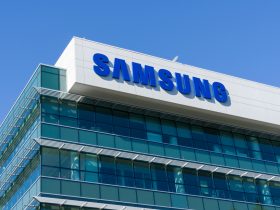The pandemic has forced retailers to fast-track the launch of additional contactless alternatives to retail practices
As retailers across the country reopen, many are grappling with a tough question of how to provide a quality experience with minimum physical contact between customers and products.
There were already a number of contactless solutions out on the market before the pandemic began. For example, contactless payments and curbside pick-up have been a part of the retail landscape for years. But the pandemic has forced retailers to get creative and fast-track the launch of additional contactless alternatives to everyday retail practices.
Multi-brand retailer Showfields has spent the last four months developing an app in-house called Magic Wand, that lets customers interact with nearly every part of the store without touching anything. Launched last week, the app lets customers point their phones at the displays of the various brands at Showfields’ New York store to learn more about brands. They can also scan items to see more product information, browse all the items within the store without having to go near them, and put everything they want in a virtual cart and pay for it. The products are packaged up and left at one of several pick-up points throughout the store. If they want an associate to help them, they can, but everything can be done digitally.
For founder Tal Zvi Nathanel, the idea was to give customers as many options for avoiding touch as possible. If they want to stay home, they can shop online, but for those that come in, the app gives them options for the amount of touching and social contact they’re comfortable with.
The question is: How can we have all the wonders of a pre-Covid world while living in a post-Covid world, Nathanel said. We think of Magic Wand as an extension of your physicality. It lets you roam the space and explore, while giving you control over where you draw the line. Maybe you’re OK touching a shirt, but you don’t want an associate to come up and tell you about it. In that case, you can [find all the information on the app].
Nathanel said the retailer has seen diminished foot traffic, as most retailers have. But with less than half of the normal number of people coming in, there’s close to double the conversion rates compared to pre-Covid numbers, since the people coming in are coming in for a specific reason. Intent has become increasingly strong in consumer behaviour.
Showfields isn’t alone in this. At the end of June, Brookfield Properties struck a deal with Fit:Match, a digital sizing tool, to add a Fit:Match studio to three shopping centres in Chicago, Dallas and Los Angeles. Customers can scan their bodies for measurements and are then presented with a digital collection of clothes in their size, from participating brands. If they decide to purchase a style, they can pick it up outside of the corresponding store.
That partnership came after an initial pilot of the project in Houston at the beginning of 2020, pre-pandemic. Brookfield said it saw 4,000 customers use the Fit:Match studio with an 80% conversion rate.
MySizeID, another company that provides tech for contactless digital body measurements, has seen an 800% increase in use since the pandemic began, said CEO Ronen Luzon. It’s used by a number of brands like U.S. Polo Assn to minimize the need for making returns when shopping online and trying on multiple products in-store. Similar to Fit:Match, MySizeID creates a digital measurement profile of a customer’s body and then lets them browse only the items that fit them. This is particularly useful for a multi-brand retailer where a customer might be a size small in one brand but a medium in another.
Meanwhile Seek, a company that makes QR code technology, has seen a 600% increase in demand from retailers since March for its augmented reality and QR code solutions, according to Modern Retail. The technology allows customers see a 3D rendering of a product before they go into a store. It recently added Sperry to its list of retail clients.
Covid helped us penetrate a lot more, Luzon said. It woke retailers up to finally understand how important having a digital option inside the store is. One of the biggest problems stores were facing was how to attract people to the store if they can’t use a fitting room or try anything on. There are a lot of digital tools that can replace those steps.










Leave a Reply